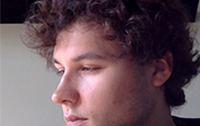
Category Archives: People

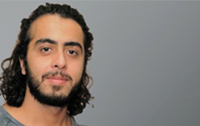
Nima Navab
Since his years at Ontario College of Art & Design studying Environmental Design, Nima Navab has become increasingly focused on spatial design, and more specifically, examining the role of art and technology in enhancing both intimate and large-scale public interactions. Through a variety of mediums and means, Nima investigates the various roles humans play in shaping both the ecological, political and sensorial landscapes of our built environment. His increased attention to everyday spatial interactions has brought to light the importance of field research, discussion and collaboration with those occupying the space as well as the space itself, highlighting the importance of spatial experience and theoretical research, both which continue to form the basis of his creative process. He is currently an active member at the Topological Media Lab, and working as a research assistant for Carmella Cucuzzella, examining the emerging aesthetics of sustainability, in today’s architectural competitions.

David Somiah Clark
David Somiah Clark is a Montréal based composer and performer with a professional background in audiovisual systems integration. Working as a consultant, he has designed and integrated solutions for clients including the Canadian Space Agency and CAE Healthcare. His compositional work can be heard in his collaboration with the Montréal electroacoustic band Pang Attack. Currently completing a B.F.A. in Computation Arts, David’s research involves exploring ways in which technologically mediated communication may confuse arbitrary boundaries between living and non-living systems and enrich our ecological experience.
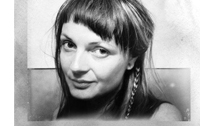
Elysha Poirier
Elysha Poirier is a visual artist, designer and illustrator working in various forms of new media. Her techniques in painting and design have been adapted to video for live performance. This includes experiments in stop-motion animation, and translating the essence of painterly techniques into a digital environment. Elysha has produced several installations and has engaged in live performances locally and abroad. She has performed with a diversity of artists stemming from experimental music, film and dance.
Her work has been described as organic and playful and embraces strong relationships to sound, design, and movement. As an image collector, Elysha has been accumulating an ongoing reserve of image libraries – often collected from nature, society, and her own personal experiments in graphics, shapes and illustrations.
Elysha holds a diploma in graphic design. Her love of design has given her a natural eye for composition and arrangement of imagery both in static and moving applications. She has taught various workshops, runs her own freelance business: Peartree Design, and is presently a Technology Strategist for Zata Omm’s Dance and Technology Research Lab, funded by the Metcalfe Foundation.
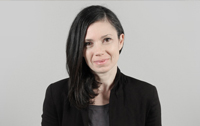
Oana Suteu Khintirian
Oana Suteu Khintirian’s work encompasses films, installation and media scenography. A professional filmmaker and editor for two decades her work focuses on movement as well as on the human body and its correlation with the environmental elements, structures and dynamics. Oana’s films have screened in international film festivals around the world and she participated in exhibitions at the Museum of Contemporary Arts, Montreal, Kunstlerhaus Mousonturm, Frankfurt and Image Forum, Tokyo, among others. She received prizes from ArtFIFA, Montreal, Moving Pictures in Toronto, Golden Prague and a Prix Italia for Creativity. She has equally been nominated by the Canadian Academy of Cinema and Television for direction and editing. She is currently working on a highly personal project that deals with paper and memory. She lives and works between Montreal and Paris.
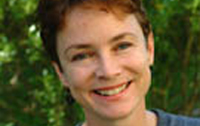
Bettina Bergo
Depuis quelques années, j’ai orienté mes intérêts vers trois principales pistes. La première consiste en une intervention critique sur la phénoménologie herméneutique depuis Heidegger. J’ai interrogé le «tournant théologique» de la phénoménologie française des vingt-cinq dernières années en cherchant à déterminer la relation entre celui-ci et l’herméneutique de la rencontre avec autrui chez Levinas? Cette question en implique d’autres : Que signifie une lecture «séculière» de Levinas? Comment cette dernière se distingue-t-elle d’une lecture influencée par la pensée juive? Enfin, quel est la contribution de Levinas à la question de la sensibilité de la chair « intersubjective »? Je m’appuie sur les contributions récentes de commentateurs français, dont J.-M Salanskis, G. Bensussan, entre autres.
La seconde piste de mes recherches poursuit le «destin» de certains concepts philosophiques et psychologiques (Affektus , Leidenschaft , Seele) suite à la révolution kantienne et en considérant l’émergence de la neurologie et de la psychiatrie matérialistes en Europe, surtout en France et en Allemagne. Ce questionnement fait partie d’un travail de longue haleine sur la sensibilité considérée à partir de 1813 (cf. Hegel, La philosophie de l’esprit ).
La troisième piste approfondit mes recherches en psychanalyse freudienne et, avant tout, sa réception française (Lacan, Pontalis, Laplanche). Il s’agit d’un domaine comportant de multiples influences et ressorts. Un des intérêts majeurs de la psychologie française se situe dans ses tentatives, partagés ou contestés, de traiter avec le matérialisme hérité du XVIIIe siècle (cf. J-M. Charcot, P. Janet). Mais l’intérêt principal de cette psychologie tient dans son effort de perpétuer un questionnement philosophique au sein du discours psychologique lui-même (cf. M. Pradines et M. Merleau-Ponty).

Tore Nielsen
Full Professor, Department of Psychiatry, Université de Montréal
Psychologist (College of Psychologists of Quebec)
Director of the Dream and Nightmare Laboratory
Research Interests:
Effect of REM sleep deprivation on dreaming. Psychophysiology and treatment of patients with nightmares and posttraumatic stress disorder (PTSD). Parasomnias among children and new mothers. Effects of virtual reality immersion on dreaming. Population studies of dreaming and nightmares.
Methodologies:
Polysomnography, selective REM sleep deprivation, spectral analysis of the EEG and ECG, sensory stimulation during sleep, virtual reality exposure, sampling and analysis of lab and home dreams, internet-based dream collection.

Sabine Bergler
Sabine Bergler is a professor in the Department of Computer Science at Concordia University. Her Ph.D. is from the Computer Science Department at Brandeis University, her MS from the Department of Computer Science at the University of Massachusetts at Amherst and her undergraduate education from Institut fur Informatik at the University of Stuttgart.
She is a member of the CLAC Laboratory conducting computational linguistics research at Concordia, the BioIT Laboratory for bioinformatics technology, and CENPARMI, the Center for Pattern Recognition and Machine Intelligence.

Peter Grogono
Computer Science and Software Engineering
RESEARCH AREAS :
– Evolutionary programming
– Programming languages
WEBSITE Please visit Dr. Peter Grogono’s website.

Mark Sussman
Mark Sussman is a theatre artist and scholar working on the animation of public space and the integration of old and new technologies in live performance. He earned his PhD from the Department of Performance Studies at New York University, where he received the Michael Kirby Memorial Award for his doctoral dissertation on 18th and 19th Century stagings of the new technology of electricity. He joined Concordia’s faculty and moved to Montreal in 2005. He is currently Associate Professor and Acting Chair of the Department of Theatre.
Sussman is a founder and co-artistic director of Great Small Works, an OBIE and UNIMA/Jim Henson Award-winning theatre collective based in New York City. Since 1995, Great Small Works has been producing new theatre works on a variety of scales, from miniature toy theatre pieces using two-dimensional cutouts and live montage, to giant parades, community processions, and circuses. The company specializes in the reinvention of ancient, popular, and avant-garde performance techniques in contemporary contexts, creating variety evenings, international festivals, and community-based projects in addition to discrete performance works. With Great Small Works, he was artistic director for Bienvenue à Tourne-York, a large-scale outdoor Carnival commissioned by the town of Tournefeuille (near Toulouse), France in Spring, 2009. In 2010, he was co-designer for theatres and exhibition spaces for the 9th International Toy Theater Festival, produced at St. Ann’s Warehouse in Brooklyn, NY. He also co-designed a retrospective exhibition of The Toy Theater of Terror As Usual, a series of news-based paper theatre shows, produced by Great Small Works between 1990-2002. The exhibition, which included a new episode, was part of “The Curse of Bigness,” an exhibit curated by Larissa Harris at the Queens Museum of Art, NYC (May to October 2010).
As part of his ongoing research based at Concordia, Sussman is continuing work on Soil Desire People Dance, a tabletop object theatre performance using live and pre-recorded video, inspired by the writings of W.G. Sebald.
Apart from Great Small Works, Sussman continues a ten-year collaboration with writer/director Allen S. Weiss, with whom he has created two incarnations of Danse Macabre, an installation-performance using dolls created by Paris-based artist Michel Nedjar, most recently at the In Transit 09 Festival in Berlin. In Montreal, he is the principal organizer of Café Concret, an occasional cabaret of experimental puppetry and object-based performance, a forum for new works in a variety of media.
Sussman’s writing has appeared in The Drama Review, (ai) performance for the planet, Connect, Stagebill, Cabinet, Radical Street Performance (Routledge, 1999), and Puppets, Masks, and Performing Objects (MIT, 2001). He is currently preparing an anthology (edited with Susan Simpson at CalArts) provisionally titled Automaton to Zombie: a Dictionary of Performing Objects. He is an artist/researcher at the Hexagram Institute, and the recipient of a research-creation grant from the FQRSC for 2008-2011.
